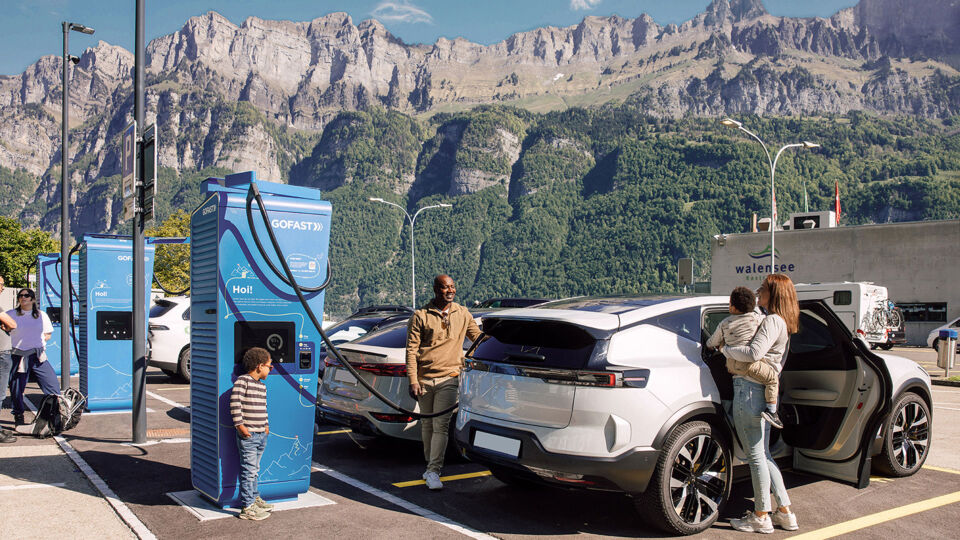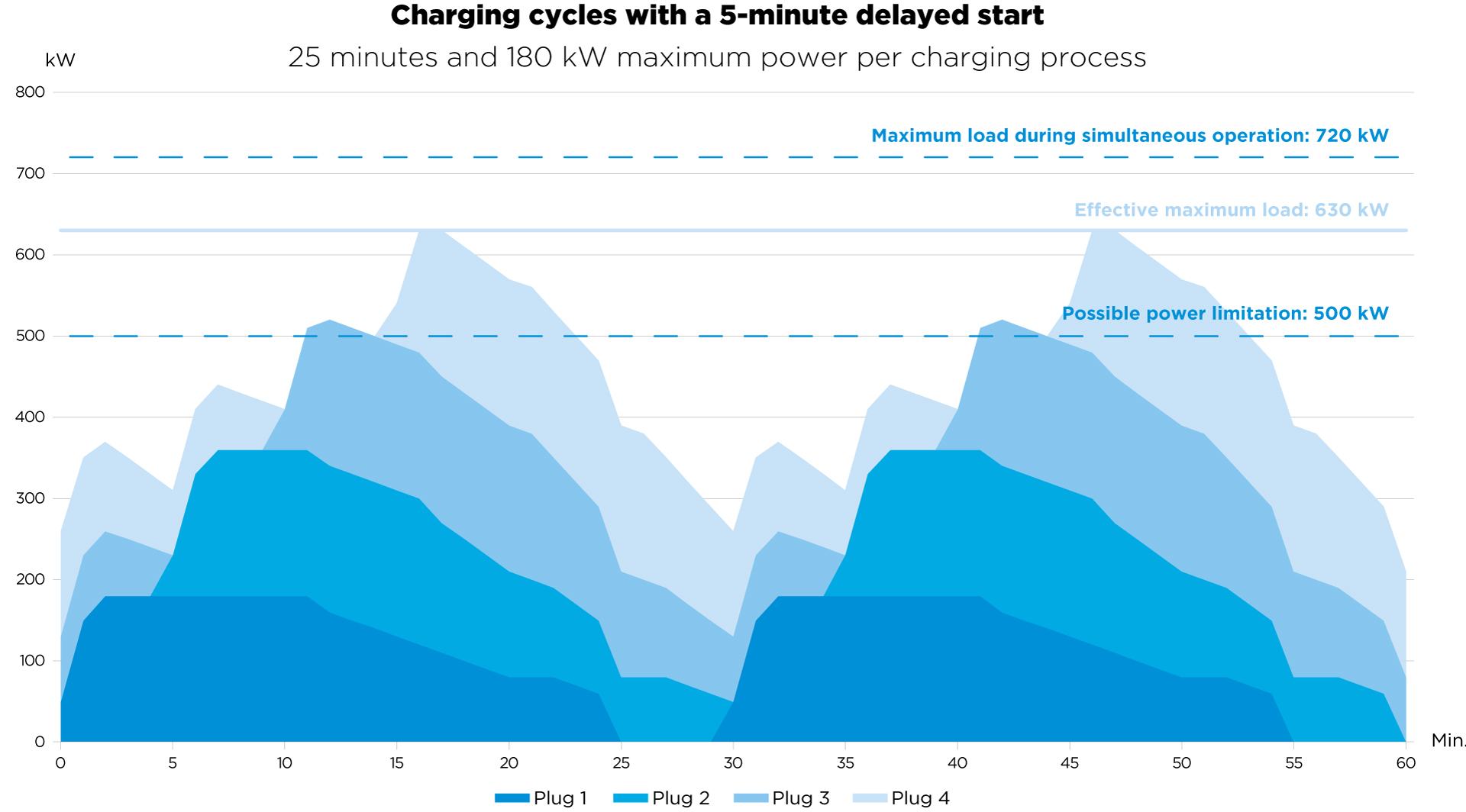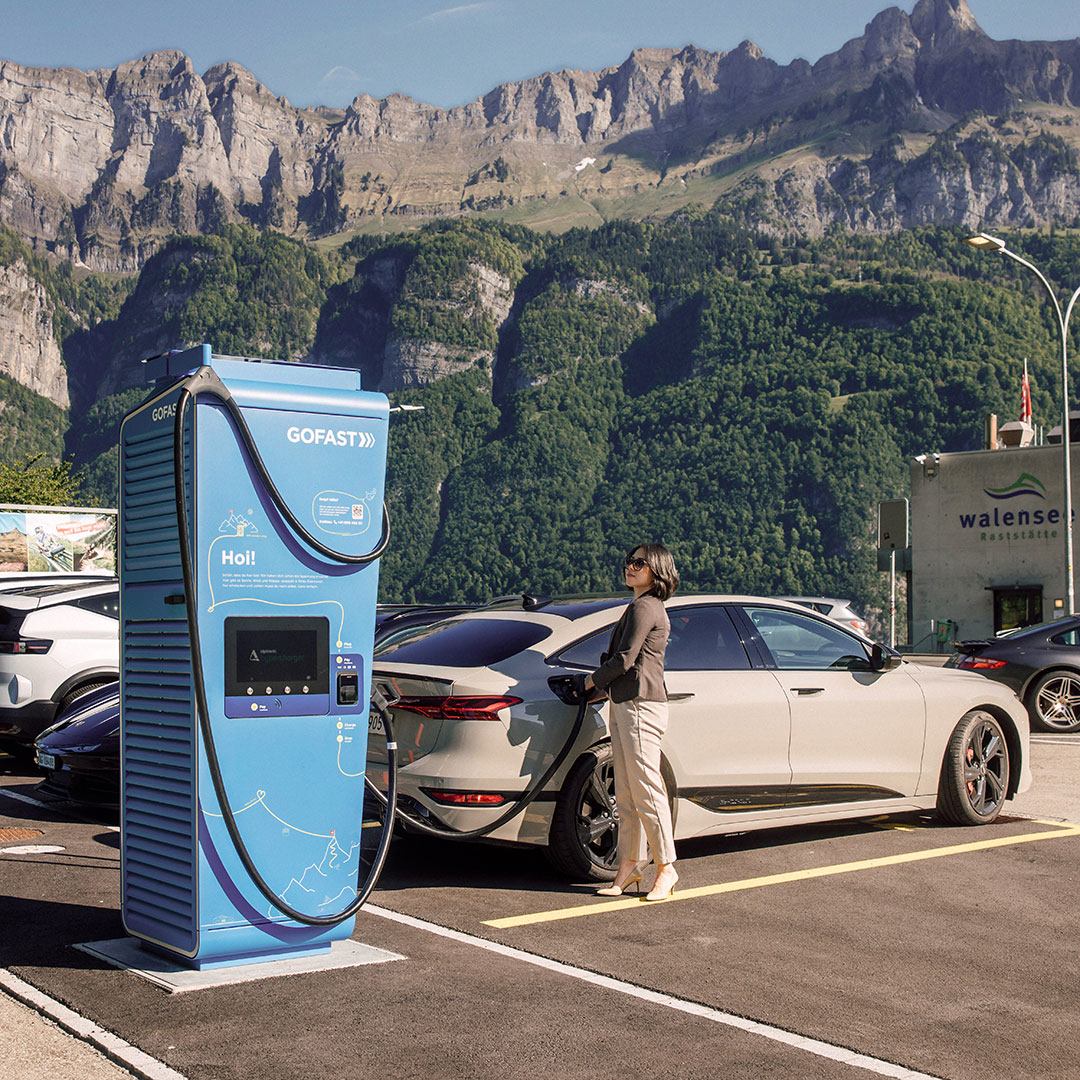Power Limitations at HPC Chargers
Anyone who often travels with an electric vehicle using public fast chargers may have wondered why, at times of high site occupancy, charging power can drop. In addition to many vehicle-related factors, there is a little-known factor on the part of the charging point operator that plays an important role: load management. In this blog post, we explain why it is used and why it rarely results in extended charging times.

Most of the time it’s the vehicle’s fault, except…
When fast-charging an electric car, it can sometimes be confusing if the charging performance does not meet expectations. Both the maximum power and the average charging power can vary greatly from one session to another—sometimes for clear reasons, sometimes for unclear ones. In many cases, this has to do with the vehicle, but not always. When a charging site is under heavy load, the location may reach its power limits, triggering the load management system installed by the operator. Typically, two factors are decisive here: the available or approved grid connection capacity at the site, and profitability considerations on the part of the charging network operator.
Every site has its limits
Let’s first look at the topic of grid connection capacity. HPC charging stations require high grid connection power. Compared to a typical single-family home, a fast-charging site may require up to 50 times more power. Wherever possible, we therefore try to achieve this by installing a transformer with a medium-voltage connection.

However, connecting to the medium-voltage grid is not possible at every site—whether due to space constraints, the local power infrastructure, or the inability to find a practical solution with the local utility. At such sites, if many vehicles request high power simultaneously, power restrictions may occur.
Even where the power infrastructure can provide very high connection capacity, it is almost never designed for the theoretical case in which every charging point is drawing maximum power at the same time. For example, eight 300 kW charging units running at full load would require up to 2.4 megawatts, posing significant challenges for the grid and being far removed from observed reality. For these reasons, the available power is limited at virtually every fast-charging site.
The challenge of the demand charge
The second reason lies in a lesser-known component of the electricity price—the so-called “demand charge”. In addition to grid usage fees, government levies, and the cost of consumed energy, energy providers also charge a price for the highest power drawn during the billing period. This “demand charge” compensates providers for making high peak loads available at any time. The demand charge varies depending on the provider and can reach up to 15 Swiss francs per kilowatt (more in this blog post). Due to this pricing structure, it is possible that the electricity purchased by GOFAST costs more than the price per kilowatt-hour we charge our customers. The example below shows the effect of the demand charge on electricity costs for two site sizes.
Example calculation of electricity costs with demand charge
Sites with 300-kilowatt HPC charging stations:
| Energy cost at 30 Rp/kWh |
Demand charge at 8 CHF/kW* |
Price per kWh** | |
| 2 Ladeplätze 600 kWh/month peak 300 kW |
Preis Energie bei 30 Rp./kWhCHF 1'800 | Leistungspreis bei 8 CHF/kW*CHF 2'400 | Preis pro kWh**CHF 0.70 |
| 8 Ladeplätze 40'000 kWh/Monat Leistungsspitze 800 kW |
Preis Energie bei 30 Rp./kWhCHF 12'000 | Leistungspreis bei 8 CHF/kW*CHF 6'400 | Preis pro kWh**CHF 0.46 |
* The demand charge varies depending on the provider and can be up to 15 CHF per kilowatt of the monthly peak value.
** GOFAST does not pass the actual electricity costs directly to customers but offers a smoothed price that varies only slightly from site to site.
The example clearly shows that depending on energy sales, the power component of the electricity price can become disproportionately large, leading to unattractive electricity prices for end customers. For this reason, network operators aim to control the power limit to ensure affordable charging prices.
Smart charging prevents reduced performance
Due to the existing power infrastructure or economic considerations, there are therefore power limitations at fast-charging hubs. To ensure that the available power is still distributed optimally with minimal impact on charging sessions, network operators such as GOFAST use intelligent load management (smart charging). This power limitation is usually set so that customers hardly notice any restrictions. This is possible due to the staggered timing of charging sessions and the nature of EV charging curves (more in this blog post). Each charging session follows a curve that rises steeply at first, then remains high with only a slight decrease, and finally drops continuously in the last third. Since charging sessions usually start at different times, the short power peaks—often lasting only a few minutes—also occur at different times. In practice, it is rare for multiple vehicles to request maximum power simultaneously. The chart below illustrates how staggered charging sessions affect total power demand.

This idealised depiction makes it clear that peaks, due to declining charging curves and time offsets, last only a few minutes, and that the theoretical maximum load is never actually reached. It also shows that a power limit of, say, 500 kW could be set without significant impact on charging duration. In this example, under otherwise identical conditions, charging time would increase by only three to four minutes, while significantly reducing both grid load and electricity costs.
Dynamic power distribution across all chargers
Technically, load management works by creating a digital smart charging profile for each site, defining the maximum electrical power available there. This value is regularly evaluated and adjusted according to demand at the site. Once the set power limit is reached, the available energy is distributed evenly across all active chargers. If one charger requests less than its assigned power, the excess energy is redistributed equally among the remaining charging sessions.
In addition to this site-wide intelligent power management, there is also demand-based power distribution within individual chargers. The exact allocation—known as “power split”—varies depending on the charger type and is carried out in larger power steps (see info box).
Conclusion
The grid connection capacity at a fast-charging site may be limited due to technical or economic reasons. Since charging sessions usually do not occur simultaneously and charging curves drop after a few minutes at peak, power limitations often have little effect on charging times. Where a site still reaches its limits, smart charging ensures that the available power is distributed optimally among active chargers. This ensures that the highest-demand charger gets the necessary power. The site’s power limit is typically set so that the effect on charging duration is minimal. As for the demand charge factor, it is expected that it will become less important in the future thanks to higher site utilisation when setting power limits.
Power split within the charger
 |
In addition to site-wide smart charging, individual chargers may also distribute power more or less dynamically between two simultaneous charging sessions. The way power is split depends on the charger type. Depending on the model, there may be a fixed power split between both connectors or a dynamic adjustment in 50 kW increments. |
 100 GOFAST Locations!
100 GOFAST Locations!